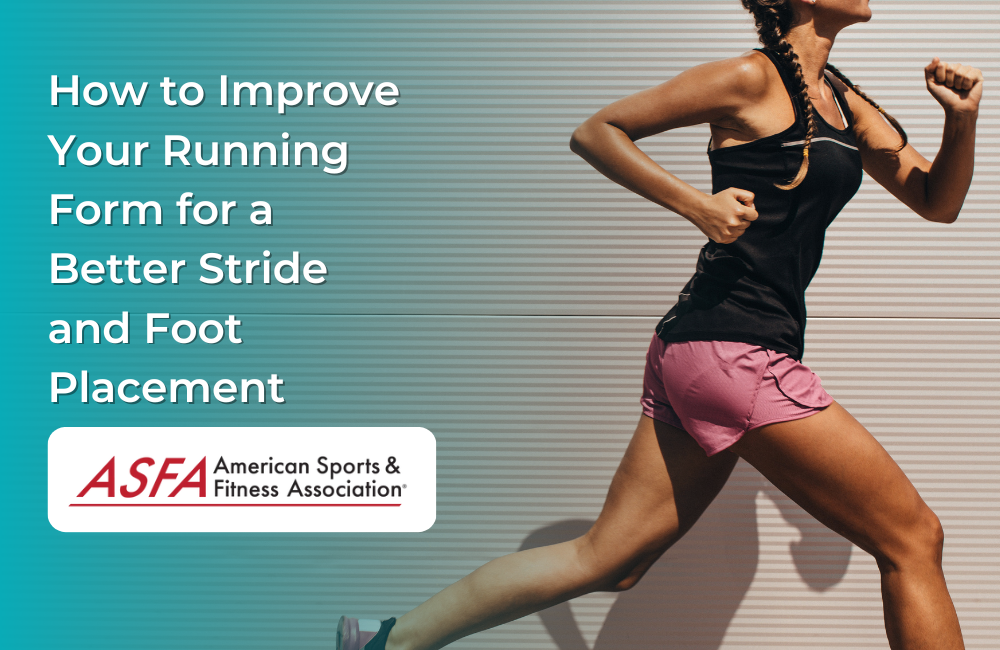Are you looking to improve your running form to get a better stride and foot placement? If so, you've come to the right place. Running is a great way to stay in shape and stay healthy, but it can also be dangerous if done incorrectly. Luckily, there are some simple exercises that you can do to help improve your running form and get the most out of your workouts. In this blog post, we'll be going over some of the best exercises for improving your stride and foot placement, as well as tips for maintaining good running form. Keep reading to learn more!
The Importance of Proper Running Form
Having good running form is essential for optimizing speed, efficiency, and performance. Poor running form can result in decreased speed, increased fatigue, and the risk of injury. Having good foot placement is one aspect of proper running form that should be taken into account when assessing your technique. Good foot placement ensures that your feet are firmly placed on the ground with each step, allowing for a more balanced and efficient stride. It also helps to reduce any impact forces that could otherwise cause injury. Achieving good foot placement is just one component of having good running form. Other factors such as posture, arm position, leg drive, and cadence also play an important role. All of these elements should be considered in order to optimize your running performance.
Tips for Improving Your Running Form
Improving your running form can help you maximize your performance, reduce the risk of injury, and increase your enjoyment. Here are a few tips that can help you improve your running form.
- Keep Your Arms at Your Sides: Your arms should be bent at a 90-degree angle and kept close to your body while running. This will help you keep your center of gravity low, and allow you to move more efficiently.
- Stay Light on Your Feet: Focus on landing softly and quickly so that you’re not wasting energy pounding the ground with each step. A good way to do this is to pretend you’re running on eggshells, or even “running like a cat”.
- Maintain a Neutral Spine: Try to keep your spine in a neutral position—neither slumped forward nor arched backward—as this will help you stay balanced and reduce strain on your back muscles.
- Lean Forward Slightly: Don’t hunch forward, but instead aim for a slight forward lean from your ankles. This will help propel you forward with each stride and prevent you from being pulled back by gravity.
- Land Midfoot: When you land on each stride, try to land midfoot instead of on your heel or toes. This will help you maintain balance and reduce the impact on your joints.
Following these simple tips can go a long way in helping you improve your running form and reach peak performance levels. Taking the time to focus on your form during each run can help you become a more efficient runner, reduce the risk of injury, and enjoy your runs even more!
Exercises to Help Improve Your Running Form
In order to improve your running form, there are certain exercises you can do to help make your stride more efficient and correct any weaknesses you may have in your technique.
- Heel Raises: Start by standing on one foot, with your toes facing forward and the opposite foot slightly behind. Push up onto the ball of your foot as high as you can while still keeping your balance, hold for a few seconds, then return to the starting position. Repeat this 15-20 times on each foot. This helps strengthen the muscles in your calves, which will help improve your stride.
- Toe Lifts: This exercise is similar to heel raises, except that you’re pushing up onto your toes instead of the ball of your foot. Again, start with one foot in front and the other slightly behind, then push up onto your toes as high as you can and hold for a few seconds before returning to the starting position. Repeat this 15-20 times on each foot. This exercise will help strengthen the muscles in your feet and ankles, which will help keep your foot placement more consistent.
- Butt Kicks: Start by standing straight with feet hip-width apart and arms at your sides. Begin jogging in place, making sure to keep your feet close to the ground and try to kick yourself in the backside with each step. Aim for 30-60 butt kicks per minute, depending on how fast or slow you run. This exercise helps you develop coordination between your lower and upper body, which can help improve your running efficiency.
- High Knees: Stand straight with feet hip-width apart and arms at your sides. Begin jogging in place, bringing one knee up as high as you can each time. Aim for 30-60 high knees per minute, depending on how fast or slow you run. This exercise helps strengthen the muscles in your legs and core, improving your running power and stability.
By incorporating these exercises into your training regimen, you can help build strength and stability in the muscles used for running and improve your overall form. Doing so will lead to a more efficient stride and better foot placement, which can result in improved performance and less fatigue over longer distances.





